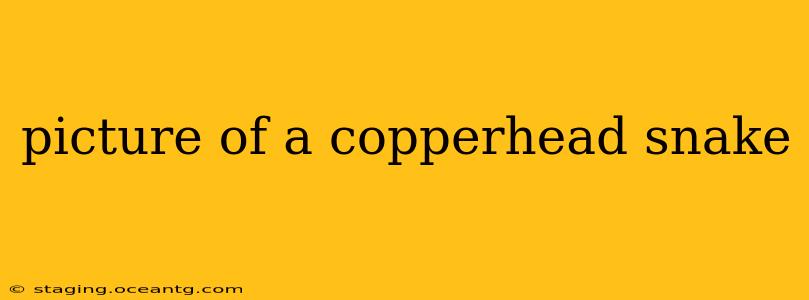Understanding the Copperhead Snake: A Comprehensive Guide
The copperhead ( Agkistrodon contortrix) is a venomous pit viper found in a wide range of habitats across eastern North America. Its distinctive markings and potential danger make it a subject of both fascination and caution. This comprehensive guide will delve into various aspects of the copperhead, answering common questions and dispelling some myths.
What does a copperhead snake look like?
Copperheads are easily recognized by their characteristic hourglass-shaped crossbands, which are typically a reddish-brown or copper color on a background of tan, gray, or brown. These bands are clearly defined and often somewhat lighter in the center, creating the hourglass shape. Juvenile copperheads have brighter, more vibrant markings than adults. They have a relatively stout body, a triangular head, and vertical pupils – key features that distinguish them from harmless snakes. Their size varies, with adults typically ranging from 2 to 4 feet in length.
How can I identify a copperhead vs. a cottonmouth?
Both copperheads and cottonmouths (water moccasins) are venomous, but have different characteristics. A key difference lies in their habitat: cottonmouths are almost exclusively found near water, while copperheads prefer drier areas. While both have a triangular head, cottonmouths typically have a much darker, almost black, coloration, often with a dark stripe along the side of their face. Cottonmouths also tend to have a wider, heavier body. When threatened, cottonmouths are more likely to gape their mouth, revealing a white interior, hence the name. Copperheads, while potentially aggressive when cornered, are less likely to display this behavior. Distinguishing between the two can be challenging, however, so caution is always advised.
Where do copperheads live?
Copperheads have a broad range, inhabiting various ecosystems throughout the eastern United States and parts of Mexico. They are adaptable creatures, found in forests, fields, rocky areas, and even suburban environments. They often seek shelter under rocks, logs, and in leaf litter. Their preference for rocky areas and hiding places makes encountering them unintentionally more common.
Are copperheads dangerous?
Yes, copperheads are venomous snakes. Their venom is hemotoxic, meaning it affects blood cells and can cause significant pain, swelling, and bleeding. However, while their bite is serious and requires immediate medical attention, copperhead bites are rarely fatal, especially with prompt treatment. Most bites result in localized symptoms, and fatalities are extremely rare. Nevertheless, it's crucial to avoid handling copperheads or provoking them.
What should I do if I see a copperhead?
The best course of action is to admire it from a safe distance and leave it undisturbed. Avoid any sudden movements or attempts to handle the snake. Give it a wide berth and allow it to move away on its own. If you're in an area where copperheads are common, wear appropriate footwear and clothing while hiking or gardening.
What to do if bitten by a copperhead?
If bitten by a copperhead, remain calm and seek immediate medical attention. While myths suggest various home remedies, the best course of action is to call emergency services (911 in the US) and follow their instructions. Try to remember what the snake looked like for accurate identification, but avoid capturing or handling it further. Immobilize the bitten limb, keep it below heart level and avoid running or strenuous activity.
This information is for educational purposes only and does not constitute medical advice. Always consult with a medical professional for any health concerns. Understanding copperhead behavior and habitat can help minimize the risk of encounters, promoting coexistence between humans and these fascinating but potentially dangerous creatures.
